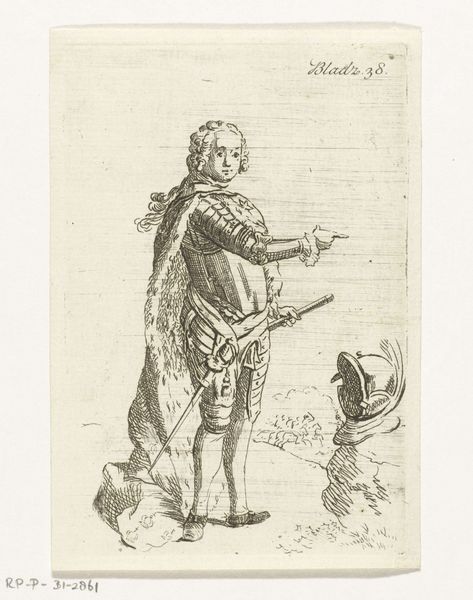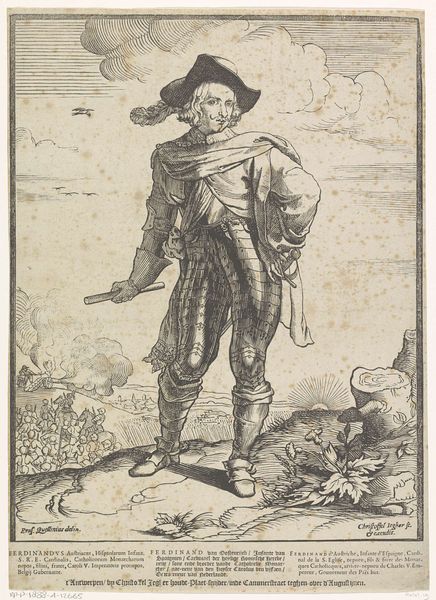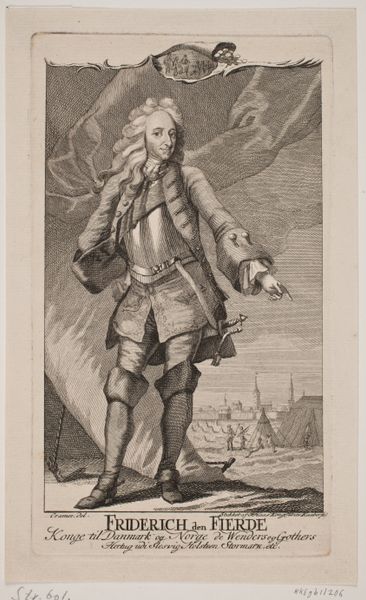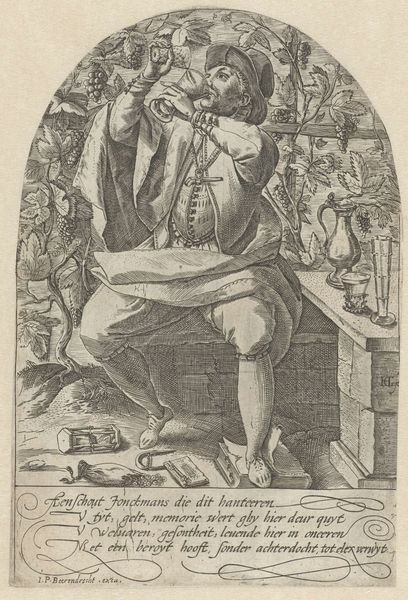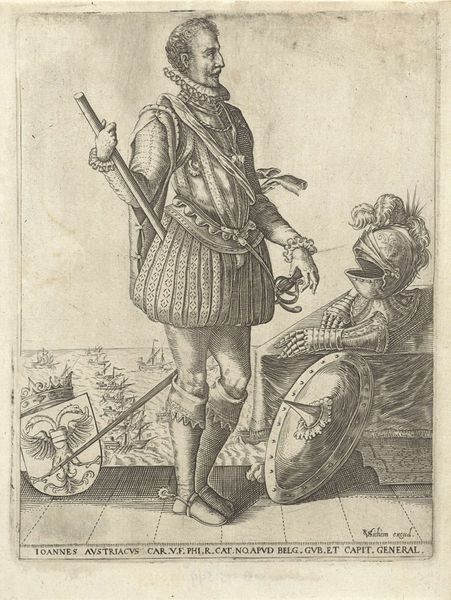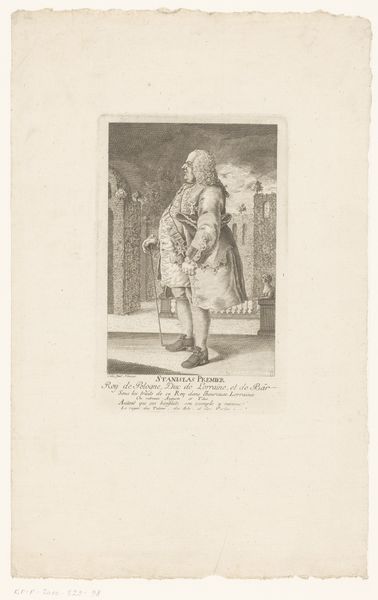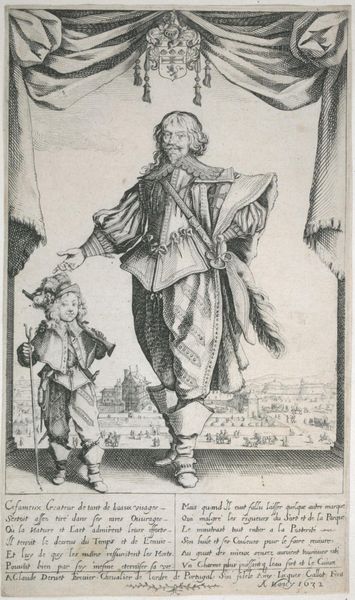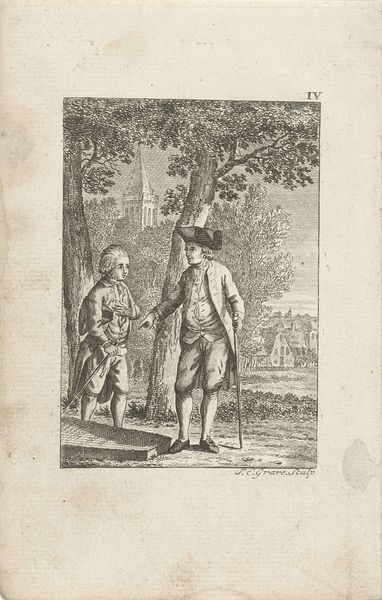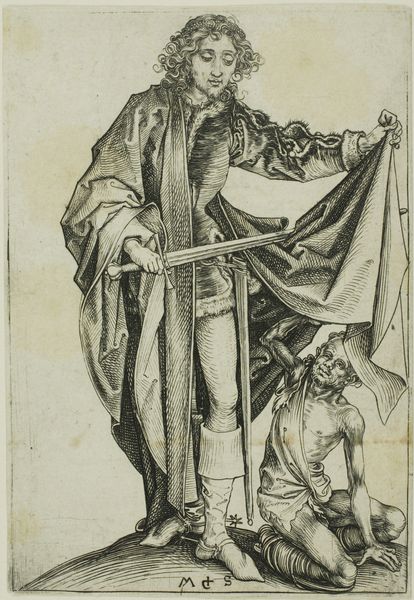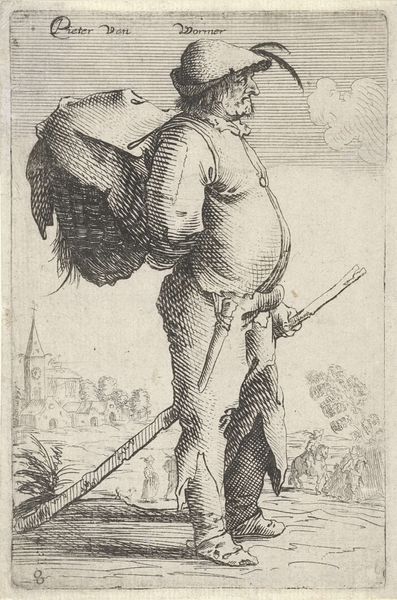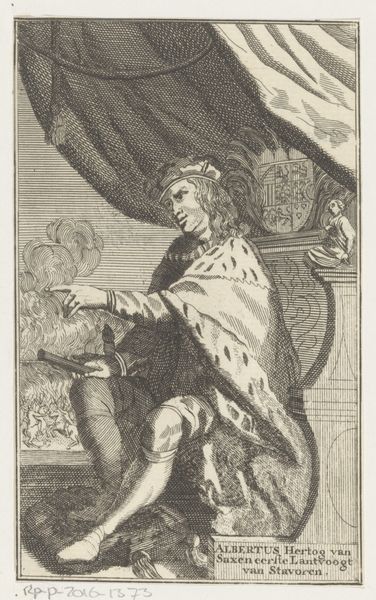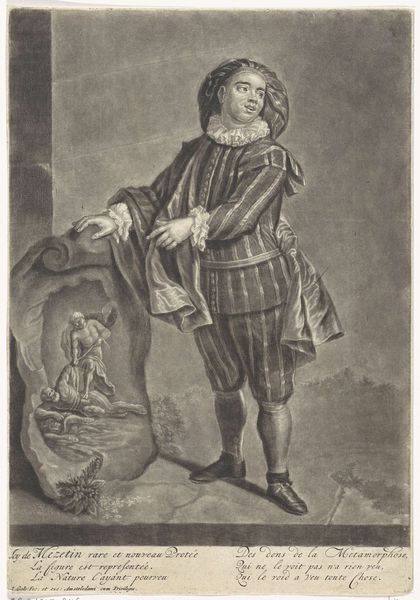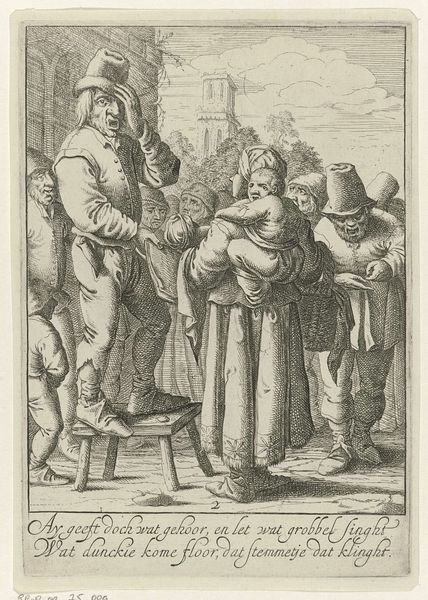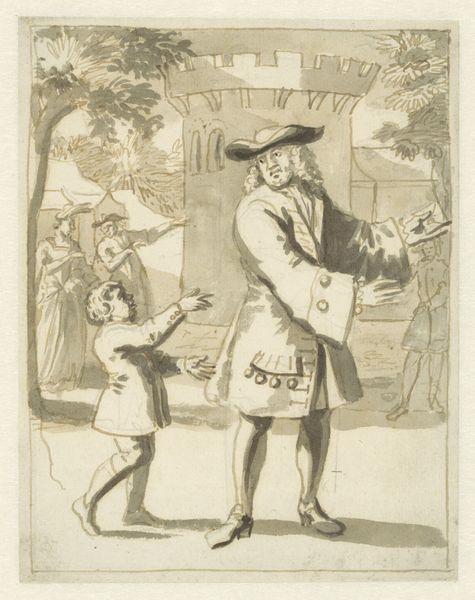
engraving
#
portrait
#
baroque
#
engraving
Dimensions: height 270 mm, width 181 mm
Copyright: Rijks Museum: Open Domain
Curator: Looking at this engraving, titled "Portret van Frederik Augustus II," crafted somewhere between 1675 and 1711 by Pieter Schenk, I find it rather striking, with an oddly stiff elegance about it. What catches your eye? Editor: Initially, a strange tension. The figure is positioned in this meticulously rendered naturalistic scene, and yet, there's a theatrical formality in his posture, a sense of calculated representation rather than genuine presence. What statements might the symbols be communicating here? Curator: Let’s start with the obvious signals. There is, in a sense, an iconography of power on display here. Consider, for instance, the Latin inscription near the urn, emphasizing virtue rather than splendor of power. There is the assertion of inherent character and its relation to popular wellbeing. Editor: Indeed, there's a constructed dialogue happening, one attempting to reconcile a traditional image of aristocratic rule with burgeoning notions of civic virtue. It almost reads like propaganda. The contrast with his casual attire, the unbuttoned jacket, what does that suggest to you? It feels almost rebellious, or a commentary on casual royal privilege? Curator: I wonder if it’s a signal to new societal models for kings and princes? Look, also, to the details: the inscription “Pro Paysia" hints towards his dedication towards the nation, a vital part of his princely symbolism. Notice, too, that all these symbolic forms converge. They represent inherited legacies through symbols tied to Roman ideals and expectations about civic responsibility, virtue, and personal worth, echoing down from prior generations and ancient civilizations. Editor: The theatrical setting does amplify the political messaging. But consider: this "Portret" hangs in the Rijksmuseum. What dialogues does it invite about Dutch national identity, the interplay between royal and civic identity during this period, and the lasting impact of Baroque modes of power? What conversations do the engravings start around social and historical meanings connected with authority, status, legacy, lineage? Curator: Absolutely, a conversation spanning generations about societal expectations, the enduring appeal of lineage and symbolism, and the continuing dialogue on values—virtue, duty, heritage. Editor: Ultimately, it offers a vivid entry point to consider power through the language of portraiture, what is depicted, what is communicated and also, most importantly, what may well be obscured.
Comments
No comments
Be the first to comment and join the conversation on the ultimate creative platform.
